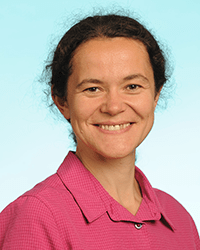Risk of Caesarean Section is Heritable
Risk of Caesarean Section is Heritable
Natural selection cannot reduce the rates of obstructed labor
Tuesday, October 17, 2017
Women born by Caesarean section because of obstructed labor (fetopelvic disproportion, or FPD) are more than twice as likely to develop the condition when giving birth than are women born naturally.
This is the conclusion of a study in PNAS by an international team of scientists, including Mihaela Pavlicev, PhD, Cincinnati Children’s Hospital Medical Center (Human Genetics), and evolutionary biologists at the University of Vienna.
Using a mathematical model, the team explained the paradoxical phenomenon that natural selection did not lead to a reduction in the rates of obstructed labor. Empirical data also show that regular use of C-sections has already triggered an evolutionary increase of FPD rates.
“Rates of Caesarean section have multiplied for decades and it is one of the most frequently performed surgical treatments worldwide,” Pavlicev says. “Even if many C-sections are not strictly medically indicated, human childbirth is complicated and risky compared to many other primates.”
The question, according to the researchers, is why evolution by natural selection has not led to a wider birth canal, which would reduce the high rates of obstructed labor.
Recently, the same research team (including lead investigator Philipp Mitteroecker, University of Vienna) showed that high rates of obstructed labor are a direct consequence of the distinct characteristics of obstetric selection in humans. They used the so-called "cliff edge model" to show mathematically that natural selection cannot reduce rates of obstructed labor.
In fact, only weak selection for a large neonate, a narrow pelvic canal, or both is sufficient to account for the considerable incidence of FPD, in which the fetus is too large to pass the maternal birth canal. Based on this model, they also predicted that the regular use of life-saving Caesarean sections throughout the last decades has already triggered an evolutionary increase of fetopelvic disproportion rates by 10 to 20 percent (which equals roughly half a percentage point of the initial incidence).
In the recent study, the scientists use the cliff edge model to predict that women born by Caesarean because of FPD are 2.8 times more likely to develop FPD in their own childbirth compared with women born vaginally. This model-based prediction corresponds with estimates of increased risk for FPD, based on epidemiologic analysis of incidence, distribution and other factors related to the condition, according to researchers.




